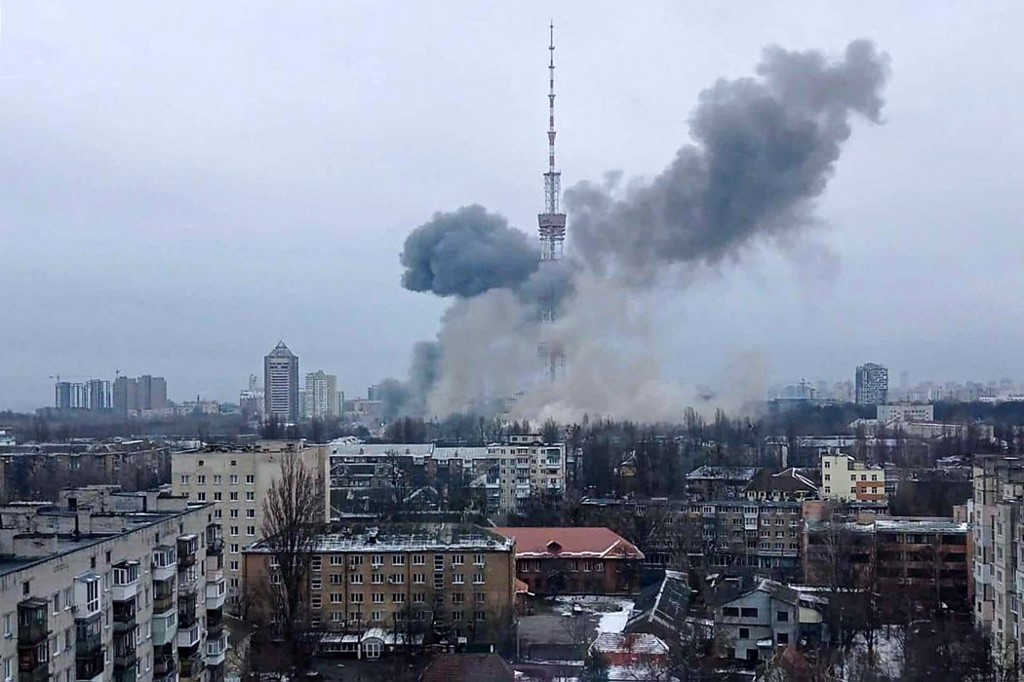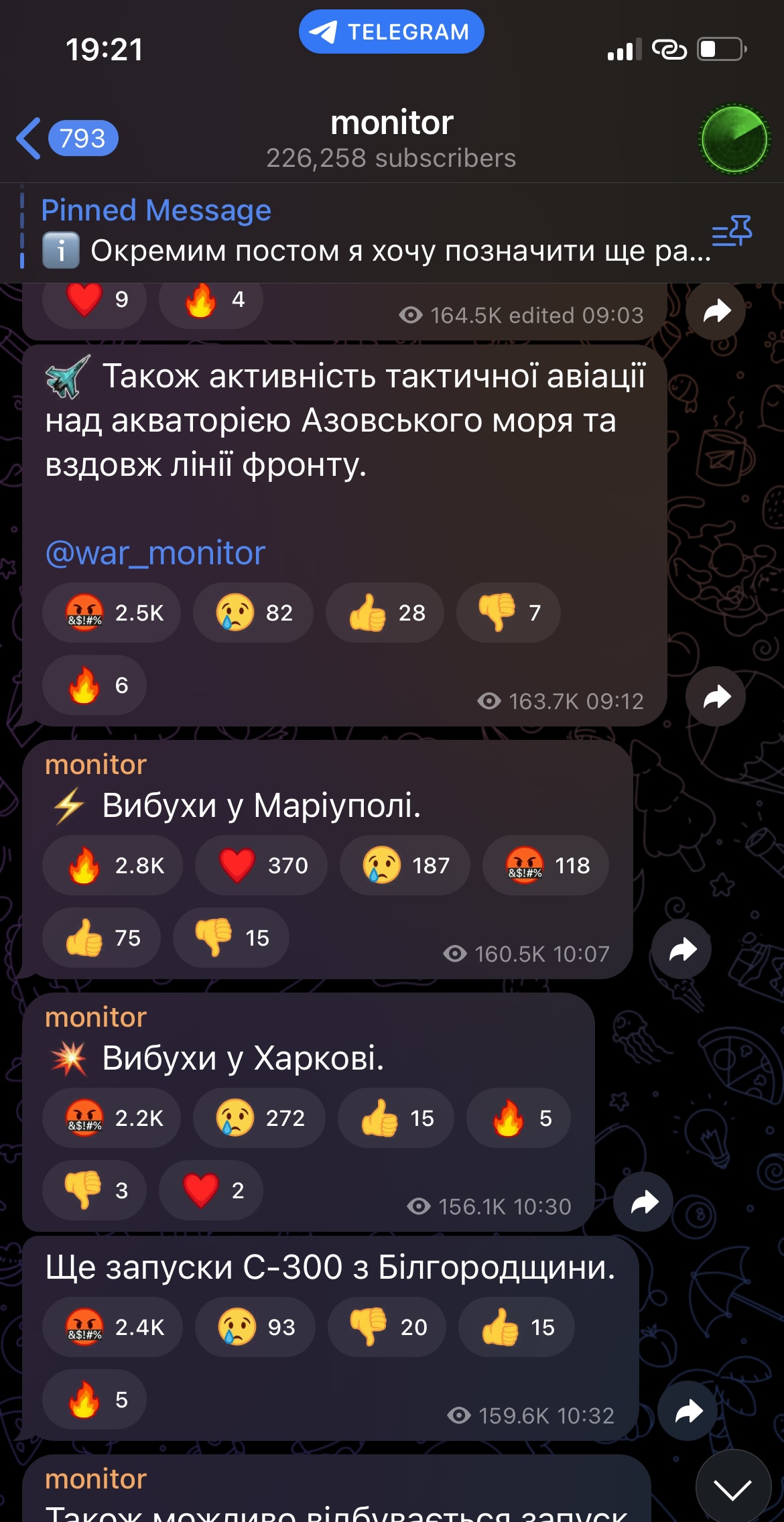In the early days of Russia’s full-scale invasion of Ukraine, when the sounds of war were still unfamiliar, the wail of an air raid siren was enough to send anyone who heard it running for shelter.
After a year of war, it’s a very different story – people have learned that most of the time an air raid alert does not lead to an attack. And even when it does, are there missiles heading this way or maybe it’s kamikaze drones? How much time before they get here? Is it worth going outside to reach a shelter or better just to stay at home and go to sleep in the bathtub instead of your bed?
None of this information can be conveyed by an air raid siren, so what do people do? They open the Telegram app and check updates on one of various volunteer-based channels dedicated to keeping Ukrainians informed and, more importantly, safe.
"If I went to a shelter every time an air raid siren went off, I'd not be able to work and I'd get a lot less sleep," one Kyiv resident told Kyiv Post. "So knowing what's actually going on is both a potential life and time saver."
“Monitor,” who runs a Telegram channel with more than 200,000 subscribers, tells Kyiv Post that Ukrainians “remember the confusion and fear at the beginning” of the full-scale invasion.
“When air alarms sounded almost every three hours, and shock waves from explosions shook houses, it was extremely difficult for ordinary citizens to understand what kind of missiles they were, where they were flying from,” he said.

5G in Ukraine Only Possible After War Officials Say
Monitor decided to do something about it and created his channel in April of last year.
Since then it has grown into a hugely valuable and widely used public service that allows people in Ukraine to make more informed decisions about their lives in the face of Russian attacks.

Smoke risesafter a missile attack targeting the Ukrainian capital’s television centre in Kyiv in March of last year.
In Kyiv, air raid sirens are still a semi-regular occurrence. The most frequent alerts are sparked by the take-off of Russian Mig-31 jets in Belarus, that are capable of carrying hypersonic missiles.
These can reach any part of Ukraine and the country’s air defenses are ineffective at combatting them – the result is every time a Mig-31 takes off, a country-wide air alert is issued though they rarely actually launch hypersonic missiles.
Telegram channels such as Monitor confirm the activity of Mig-31s, sometimes even before the sirens sound and most people take the calculated risk that they can carry on as normal.
But if the sirens sound and Telegram reports that missiles have been launched from the Black Sea for instance, it might be time to head to the shelter.
If it reports that air defenses are active in Kyiv region, then the missiles are close and perhaps it’s time to run.
“The most difficult periods were shelling in spring and summer,” says Monitor. “Sometimes only a few hours passed between combat sorties of Russian aircraft. Therefore, after the explosions were already heard around the country, I realized that I had a certain amount of time to rest.
“Now it’s easier, because the Russians have fewer cruise missile reserves, so rocket attacks are quite predictable for me and from two weeks to a month passes between them.
“I go to bed when the country is relatively quiet, no aircraft are flying along the front, no enemy drones are flying. But I always leave the communication controls on.”

Monitor reporting activity of Russian aircraft and subsequent explosions in Kharkiv and Mariupol earlier this week.
Tracking an entire war obviously entails taking in vast amounts of information and Monitor says he follows over a thousand sources on social media alone.
To obtain crucial information as fast as possible, he also monitors “two to ten radio waves on several radio stations from morning to night, and I also receive messages from operational sources.”
The end product is a near 24-hour service providing updates on air alerts, bomber flights, missile launches, drone attacks, explosions, air defense activity and countless other aspects of the war in as close to real-time as possible without being in the headquarters of the Ukrainian army.
Monitor is by no means the only Telegram channel engaged in such an endeavor – the “Nikolaev Vanek” channel is dedicated to keeping its more than 400,000 followers informed about the war, as well as providing information about air raids. It also provides details of front line operations and some analysis of events.
In order to obtain this information, Nikolaev Vanek is incredibly well connected. “You can name a special services or military formation in Ukraine that is taking part in the war and I cooperate with all of them,” he tells Kyiv Post.
This obviously means such channels have to be careful about sensitive information, and the channel makes sure to obscure exactly where their information is from and not publish details such as the operations of special forces, for example.
Just like Monitor, Nikolaev Vanek is run primarily by one person, though others help out on an irregular basis when they can spare the time. Perhaps the most remarkable thing about the Telegram operations is the fact they’re done on a volunteer basis, fueled purely by the motivation to defeat Russia and save Ukrainian lives.
“During the entire full-scale invasion, I only had five days off,” Nikolaev Vanek says.
“There is no schedule of the day as such – I usually sleep from two to five hours a day. I spend the rest of my time on the channel and related matters. Keeping your finger on the pulse is much easier when there is something to fight for, someone to avenge and someone to punish.”
Even some of the channels’ followers find it difficult to believe that so much work can be done by so few people.
“I even got a message that the channel is run by a bot with automatic settings,” says Monitor. “Because readers thought that it was impossible for a person to work like this — that’s funny.”
He does, however, admit: “I get burned out, but I remember every time that it’s not a matter of choice. The whole country is at war and my platform is just one of the contributions that every Ukrainian makes for our common victory.”
Yet being at the forefront of information about attacks does occasionally lead to unimaginable situations of helplessness.
On the night of June 30, five Russian bombers launched supersonic Kh-22 missiles at Serhiyivka, in the Odesa region. Monitor was following the flights of the aircraft and heard the order to launch their payloads.
The missiles hit residential buildings, killing 21 people including a child.
“I learned the hard experience of not being able to warn people in time,” he says. “Because rockets fly at supersonic speed – these are seconds in which you don’t even have time to write at least one word.”
You can also highlight the text and press Ctrl + Enter






